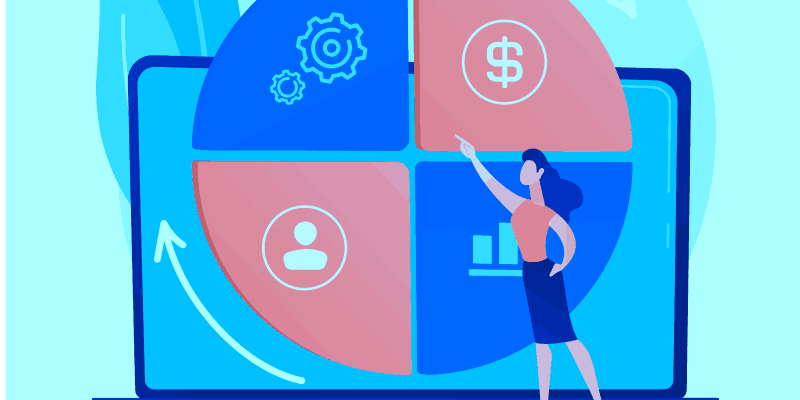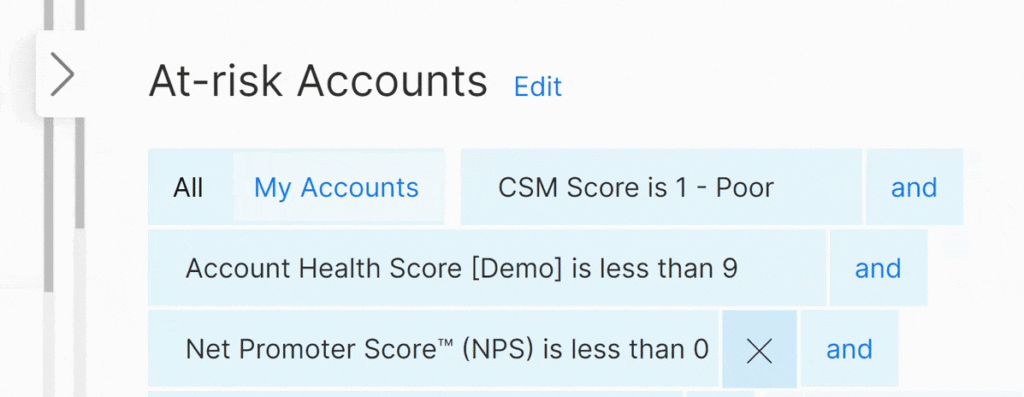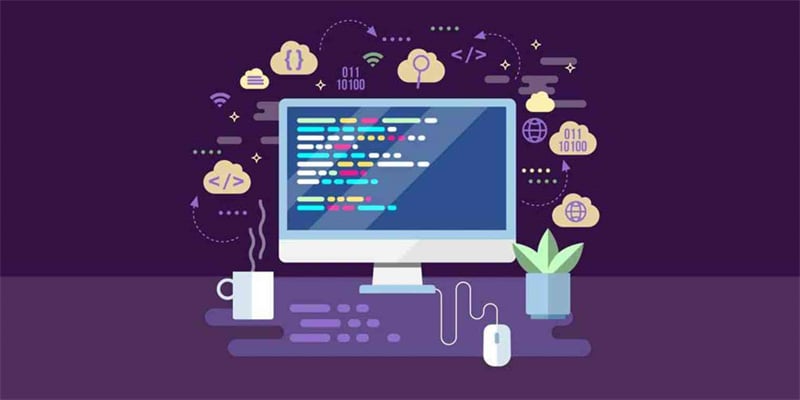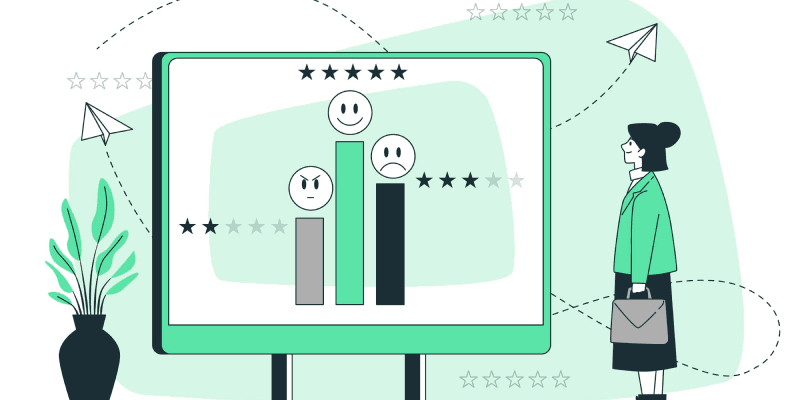Customer Retention Analysis: A Guide for SaaS Businesses

The ability to sustainably grow revenues from your existing customer base is essential to the
survival of SaaS companies in 2024.
To do this, you first need to retain your customers. This requires a deep understanding of what it is about your product, service, or brand that drives customers to continue investing over time.
Customer retention analysis is the first step you need to take.
In this article, we will take some time to dive into what analysis of customer retention is and how you can go about doing it properly.
Customer Retention Analysis: Meaning
Customer retention analysis includes the systematic examination of customer interactions, behaviors, and preferences to get an in-depth understanding of the factors that influence customer loyalty and churn. By analyzing the obtained data and metrics, you can successfully identify patterns and trends that clarify why customers stay with or leave your company.
To understand how to do customer retention analysis and get the most from its metrics, it is crucial to perform it frequently and right from the start of the customer journey. By analyzing various touchpoints in the customer journey, like purchase history, feedback, customer engagement, and general satisfaction level, a company can get insights to optimize customer strategies and implement initiatives to retain customers and reduce churn.
How Does Customer Retention Analysis Work in SaaS Businesses?
Customer retention analysis can have a huge impact on various crucial SaaS business segments.
Since SaaS companies thrive on recurring revenue, retaining existing customers, as they ensure a stable revenue stream, is one of the most important tasks for the customer success team. Losing customers and acquiring new ones is often more expensive than retaining the current ones, so customer retention analysis can also improve a company’s cost efficiency and revenue stability.
By understanding retention patterns and preferences, you can optimize strategies to maximize Customer Lifetime Value (CLV) and motivate loyal customers to spend more. Also, it can improve product development by helping you understand the relevance of a certain feature, product usability, and overall satisfaction with it.
High retention rates and great customer experiences in a competitive SaaS landscape can certainly set a company apart from competitors and enhance its reputation. Satisfied and happy customers will more likely advocate for your product or service and potentially bring in new customers through referrals.
Finally, analysis of customer retention usually includes predictive modeling, which gives you a chance to foresee potential churn and take adequate preventive measures. This can help retain users before they even consider leaving.
Steps of Retention Analysis in SaaS Businesses
To systematically analyze retention data and create and implement effective strategies to improve retention, we recommend following the next steps tailored specifically for SaaS businesses.
1. Define Objectives
Before you take any action, give yourself some time to think strategically. Outline what you wish to achieve through retention analysis and set clear objectives to make the most of it. Objectives may include reducing churn, improving customer satisfaction, increasing CLV, etc.
2. Collect Relevant Data
Gather comprehensive data like user interactions, feature usage, customer feedback, support interactions, subscription plans, and any other relevant data points for your SaaS business. Important note: to ensure data accuracy and consistency, prepare data for analysis by removing duplicates, standardizing formats (ensuring consistency and uniformity in the way data is collected), and handling missing values (identify missing data, establish the reasons for the missingness, and apply techniques for the missing data filling). This is how you’ll get a comprehensive customer retention report that provides you with a full overview of customer retention strategies performance over a certain period of time and also offers recommendations and insights for customer retention improvement.
3. Identify Key Metrics
Determine key performance indicators, or KPIs, which are metrics that measure and evaluate the efficiency of the strategies implemented for customer retention. Let us present you with the most common ones used for customer retention analysis:
- Churn Rate measures the percentage of users who decide to stop using your product or service over a certain period of time. It is a crucial metric to understand customer attrition.
- Customer Retention Rate is the opposite of the retention rate and calculates the percentage of customers a company managed to keep over a certain time frame.
- Customer Lifetime Value (CLV) calculates the total revenue a business can expect to obtain from a certain customer throughout their relationship with it.

- Net Promoter Score (NPS) measures customer loyalty and satisfaction by asking customers how likely they are to recommend the product or service to others.

- Renewal Rate metrics show the percentage of users renewing their subscription plans at the end of the contract term.
- Upsell/Cross-sell Rate measures the overall success of upsell and cross-sell efforts within the current customer base.
- Customer Feedback and Satisfaction Score refer to the metrics gathered from various surveys or feedback forms.
4. Segment Your Customers
Segment your customers in cohorts based on usage patterns, demographics, behavior, plan types, platform interactions, etc. By using customer success platforms like Akita, you can build targeted customer segments by filtering on their KPIs and the imported traits of accounts and contacts. You can monitor the cohort’s performances anytime and get visual metrics to adjust retention strategies to fit their specific needs and preferences. Centralize all your customer data into a single all-in-one platform, facilitate and speed up the flow within the team by sharing the data in real-time, and receive alerts or playbooks to communicate with your customers to boost retention rates.
5. Analyze Retention Metrics
Calculate the retention rates and analyze their metrics regularly to get precise information on the number of customers who are staying over time, and study churn patterns to identify when and why customers churn. Analyze customer feedback, customer support ticket survey responses, and other data to identify the root causes of low retention rates and churn. Check out our recommendations when it comes to customer retention tools.
6. Predict Churn by Using Predictive Modeling
Use machine learning algorithms to predict the possibility of churn based on behavioral patterns and historical data. Make sure to test and validate the effectiveness of predictive models.
7. Develop Retention Strategies
Based on the obtained data, create targeted strategies like personalized onboarding, proactive customer support, or feature enhancements and measure their impact on retention metrics.
8. Monitor and Improve Retention Campaigns
Revisit retention metrics regularly, refine strategies as you go, and adapt to changing customer behavior and dynamics. Make sure to solicit feedback to improve your SaaS service or product.
Can CS Platforms like Akita Help Identify Churn and Retention Issues?
Yes, they can!
All of your customers’ data will be centralised, visible, and queryable within a CSP. You can use the filters to create segments identifying accounts or users at-risk of churn.
Below, you can see the filters that have been applied that identify three accounts at risk of churn. You can then manually work with the list provided, drilling into the account record to get a 360 degree view of that account’s performance.
CSPs also have the capacity to automate action via playbook technology.

Conclusion
During the customer retention analysis, you can examine user behavior, engagement metrics, and feedback, so you can get valuable insights to improve customer satisfaction and loyalty. Akita serves as a hub for all your customer data, allows you to segment customers based on any trait you like, and provides visual data that everyone on the team can review instantly. Use the given data strategically to optimize your offerings and improve user experiences.
Frequently Asked Questions
What tools or technologies are used for customer retention analysis?
Businesses usually use customer relationship management (CRM) software, customer success platforms, machine learning algorithms, and analytics platforms to gather and interpret retention-related data.
What are some of the most effective practices to improve customer retention based on the analysis findings?
Personalizing the customer experience, improving product usability, providing exceptional customer support, and offering loyalty programs are some of the most common practices that can improve retention rates.
How often should businesses conduct customer retention analysis?
The frequency may vary from business to business, but it’s beneficial to conduct regular analysis on a monthly or quarterly basis to monitor the impact of strategies and adjust them timely.








